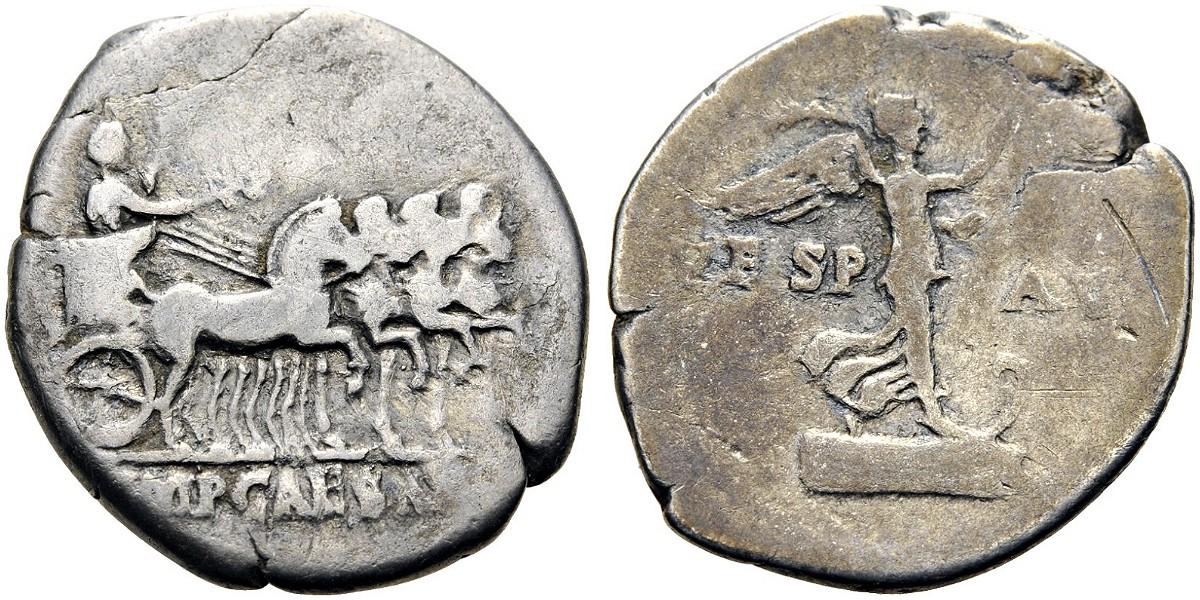Today I discuss one of my favourite coins!

Vespasian
AR Denarius, 2.84g
Rome mint, 74 AD
Obv: IMP CAESAR in exergue; Vespasian stg. r., with branch and sceptre, in quadriga r.
Rev: VESP AVG across field; Victory on prow r., with wreath and palm
RIC 688 (R). BMC 147. RSC 569. BNC 121.
Ex Nomos Obolos 4, 21 February 2016, lot 575. Ex GH Collection. Ex Superior Galleries, The Moreira sale, Part II, 10-11 December 1988, lot 2374.
A major feature of Vespasian’s coinage is in its use of antiquarian styled types and recycled ones from previous eras. K. Butcher and M. Ponting in The Metallurgy of Roman Silver Coinage have shown that a big component of Vespasian’s silver bullion consisted of recycled denarii from the republic and early empire. Vespasian’s moneyers were removing the older worn coinage and replacing them with brand new coins and in the process keeping some of the familiar reverse designs that the Roman public had grown accustomed to.
With that in mind, this very rare coin which copies not only the reverse design from a denarius of Octavian, it also copies the obverse. The only change is with the reverse legend VESP AVG to indicate Vespasian’s authority. Being undated, it is difficult to correctly place in the series. RIC assigns it to 74 AD based on the legends. D. Hendin to 71-72, just after Vespasian and Titus’ joint triumph for the Jewish War.
This denarius is so rare I have only been able to locate six other examples, all of which are in public collections: BM 3 examples (one plated), Paris (BNC 121, obv die match with mine), Berlin (rev die match with mine), and ANA NY. Curtis Clay has kindly informed me of several other examples offered at auction: “Glendining, 1952, Ryan Part 5, part of lot 2147, not illustrated, ‘only fine but rare.’ Perhaps the same coin as Trau Sale, 1935, lot 625, pl. 8: a worn example. Stack’s, Knobloch, May 1980, lot 300. VF, but small edge chip (the ANA NY coin). Leu, April 1982, lot 327, VF.”
I think the RIC frequency rating of ‘rare’ really underestimates the rarity of the type.
